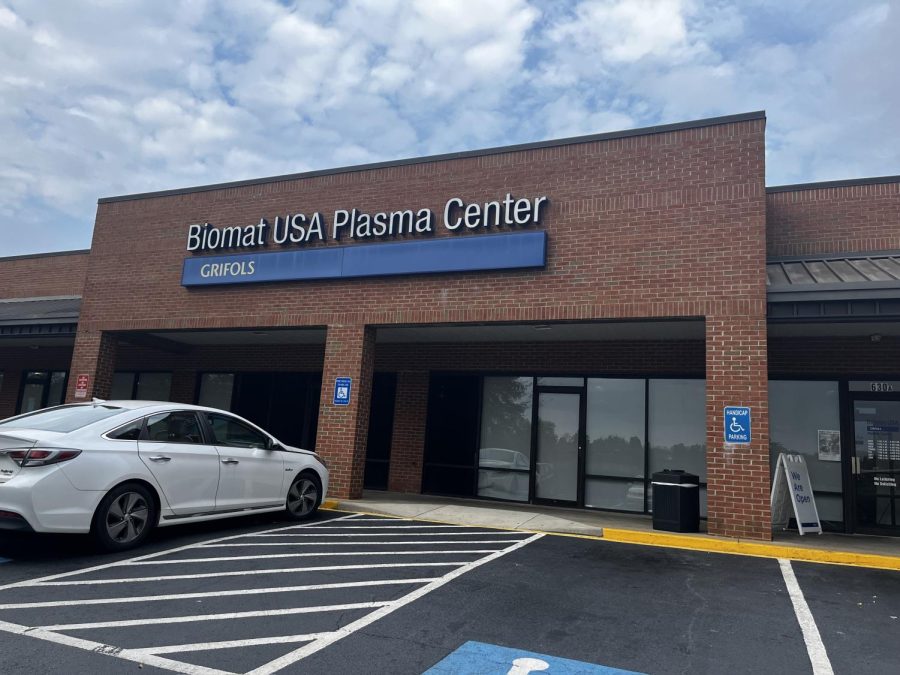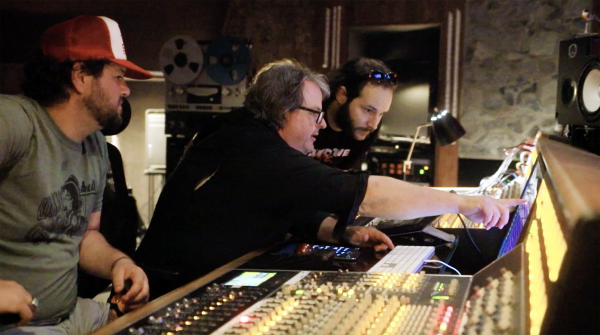Late On Rent? Sell Your Blood.
“If I do have to donate, I don’t think it’s going to be for a while.”
Biomat USA Plasma Center located in Macon, GA.
Blood donations are essential in the United States.
To put this into perspective, sickle cell disease affects around 100,000 patients per year in the United States. These patients can require blood transfusions throughout their lives, according to Red Cross Blood. More than 1.8 million people were projected to be diagnosed with cancer in 2020. Due to this, blood is vital in their daily lives for chemotherapy treatment, according to the American Cancer Society.
For things such as surgeries, chronic illnesses and cancer treatments, giving blood is crucial. A blood transfusion occurs in the United States every two seconds. This means that every two seconds someone needs blood, according to America’s Blood Centers.
One donation can be separated into more than one blood product including but not limited to red blood cells, plasma, and platelets. Approximately 3 percent of the United States population donates blood each year.
What if you could donate blood and help those in need, while also making money? That is what plasma donation centers are utilized for.
Sunny Chen, a junior attending Mercer University, decided to donate plasma for some extra money. While she explained that donating was fairly simple, it did come with some complications.
Plasma Information
Plasma is the liquid segment of the blood in absence of cells in our bloodstream, such as red blood cells, according to Vitalant Blood Donation. It is the part of the blood that helps you stop bleeding when you get a cut, and contains growth hormones to help muscles and bones grow.
Plasma is pale yellow in color and made up of 90 percent water, along with salts, enzymes, proteins, and antibodies that help fight infection, according to WebMD.
WebMD states that one of plasma’s major jobs is keeping blood pressure at a healthy level. It also carries the important nutrients to the correct parts of your body. Making up 55 percent of the blood, plasma is the majority of your blood.
Plasma donation allows a person to give a specific part of their blood to patients in need of replacing theirs due to major blood loss regarding injuries such as severe burns, automobile accidents, and more. Along with this, it can also benefit patients who suffer from rare blood diseases and blood clotting disorders, according to the website.
Red Cross Blood specifies that a single car accident victim can require as many as 100 units of blood. With that being said, nearly 6,500 units of plasma are needed daily in the United States.
The Donation Process
Biomat USA is a plasma donation center located in Macon, and it is owned by Grifols, which is the largest network of plasma donation centers in the United States.
Cari Clark, senior lead at Biomat USA, explained the process involved with donating plasma and the technology used to achieve this operation.
“We don’t make the medications, we just collect the plasma. So we do a screening process on a new donor, or all donors when they walk through the center,” Clark said. “They check your blood, and they check your pulse, your temperature, and your blood pressure. Once you pass through there, then you go on to the back. And that’s where they actually stick you.”
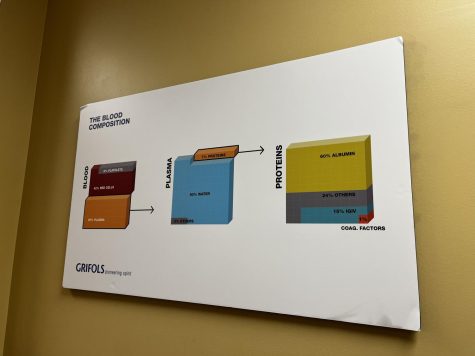
The machine used is called a plasmapheresis machine. It is a specialized medical device that collects blood from a vein in your arm, according to the United States Department of Health and Human Services.
“It’s a machine, and it has a bottle on the front, and it has cycles,” Clark said. “So the first cycle will draw your blood from your body. Then, it rotates and separates your red blood cells from the plasma. Then it’d be another process where the red blood cells go back to your body and then it keeps the plasma.”
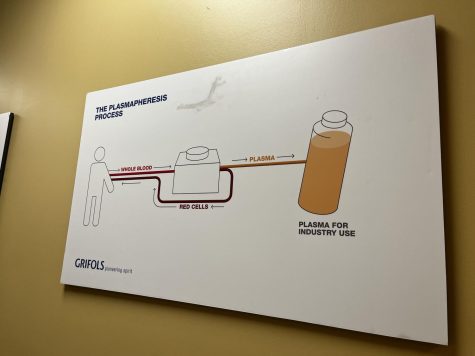
The process usually takes between 45 and 90 minutes. Most patients say that the finger pricking hurts worse than the actual needle extracting the plasma, and that it is the worst part of the entire process. Otherwise, there is no pain or discomfort experienced, Clark said.
“So once we collect it, we freeze the bottle of plasma and once we freeze it, we send it off every two weeks to get tested. So once you get tested then we’ll start making medications with it,” Clark said.
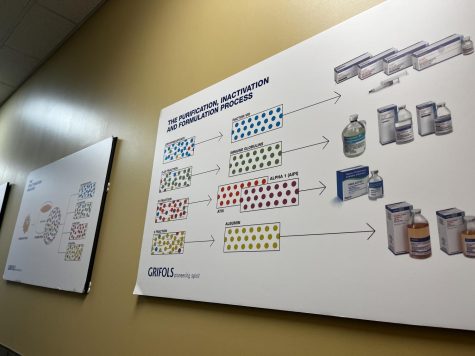
Plasma can be frozen up to a year from the date it was first collected, according to America’s Blood Centers.
The Compensation
Because sitting through that process and getting your blood stripped is not one of quick ease, plasma donation centers provide compensation for donors who have given their plasma.
“At the end, they get processed out and we will pay for the time spent here. You can donate twice in seven days, so you come twice within a week. We have people that come in every week at most two times,” Clark said. “Lately, Biomat has been seeing around 180 people per day to donate plasma and we are open seven days a week.”
Private plasma collection companies allow donations twice a week since the body can replenish plasma 48 hours after the initial extraction, as opposed to non-private companies where an individual can only donate plasma once every 28 days, according to SeedScientific.
How much you make donating plasma varies depending on how often you donate. Additionally, not all plasma centers pay you for donation. The American Red Cross agency does not, but most private companies do.
The reason behind this is for ethical purposes. The American Red Cross uses their plasma donations for hospital patient blood transfusions, while private companies use theirs for pharmaceutical use, according to SeedScientific.
Each plasma donation center sets its own compensation rates, but those range from $20 to $50 per donation, depending on the location, according to wallethacks.com. This can add up to be around $1,000 per month.
The compensation range is due to the volume of plasma that is able to be donated, which is set by the FDA depending on the weight of the donor. Therefore, the more you weigh, the more plasma you are allowed to donate and your compensation will be higher. First-time donors typically get more compensation than regular donors.
Centers usually pay their donors through a pre-loaded debit card after being processed out. In addition, plasma money is taxable, considering regular donors can make a large amount, according to SeedScientific.
Who Can Donate?
More than 62 percent of the total United States population is eligible to donate blood, according to America’s Blood Centers.
SeedScientific states that the reason why an individual would not be qualified to donate would be because of illness, medical conditions such as HIV, or those who have just traveled to areas known for disease outbreak. This is because viruses can be transmitted to the patient during transfusion, as well as be unusable for pharmaceutical use.
Although the body typically repairs itself naturally after donation, there are concerns of how a donor’s body reacts to the plasma donating process, as the long term health effects are uncertain by medical professionals.
However, blood donation in general is important in saving someone’s life. Whether that be patients that are bleeding out during surgery, or a newborn just diagnosed with sickle cell disease, if there is an adequate supply of blood and plasma, the problem can be successfully solved.
A Donor’s Experience
Sunny Chen, a junior student attending Mercer University donated at BioLife plasma.
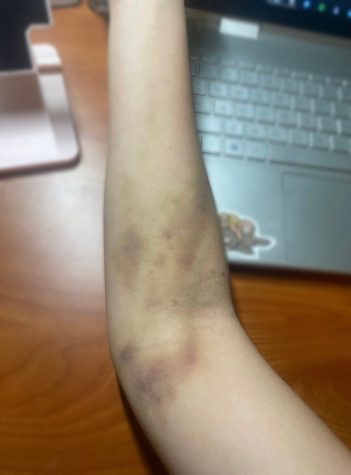
“I began by registering on the app. I filled out all my information there and set up an appointment,” she said. “Your first appointment is going to be a physical with a donation. The physical takes around like an hour or two. My first time there it took me like around four to five hours just to get the physical.”
During this, she was asked procedural questions such as if she had any tattoos or piercings. After the physical, she sat down and began the process of donating.
“It’s important to eat a meal before and drink a lot of water. Because the first time I donated, I got lightheaded like four fifths of the way to completion. So it’s important to eat,” she said.
She emphasized that it is not the type of pain that you would feel from something like a body piercing.
“It’s more like an uncomfortable type of pain. They do shove a needle in you and then when the blood returns into your body, it’s very uncomfortable. And when they take the blood out, it’s just unpleasant. It doesn’t hurt per se, but it’s just really really unpleasant,” Chen said. “And it’s quite a lengthy process. You do have to sit there for like 30 to 40 minutes just donating before they give you any money.”
While she was donating, there was a promotion running that would pay $900 to any first time donors that completed seven to eight donations within the one month deadline. This is equivalent to donating twice a week.
Chen said she didn’t do the promotion, but she was paid.
“The first time I got paid $100, but they can’t use your plasma until you’ve donated the second time. So the second time I got $130,” Chen said. “I was paid using a BioLife gift card. They give you a debit card, and then you just have to activate it through your phone. Then they do everything through fingerprints, so they know if you’ve donated or not. And once you donate, they just automatically put money on your card.”
While Chen did not mind donating, she said she did have some aftereffects.
“Because I didn’t eat much and it was my first time, for the rest of the day, I really couldn’t function that much,” she said. “I was really tired and I was just laying around all day. The next day I also felt the same way. Then afterwards I think after the third day, I was fine.”
Her second time donating however, she got a hematoma right as they returned her blood because they punctured her vein. When they returned the blood, it leaked out of her vein and created a blood pocket on the area where they punctured the needle.
“So that bruised me for a whole week and a half. I still have bruises now,” she said.
Donation Information
To donate plasma, you have to be at least 18 years old and weigh more than 110 pounds. When going into your plasma donation appointment, the general checklist of things to bring are a valid identification issued by the government, proof of your social security number, and proof of residency, according to SeedScientific.



